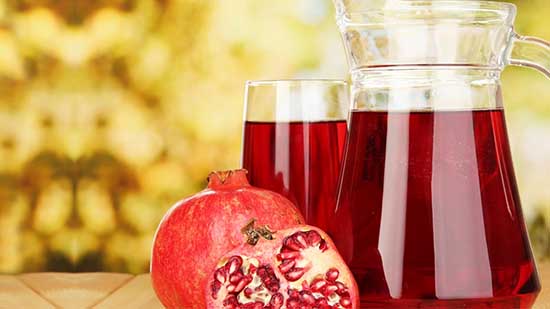How can I choose the best organic pomegranate?
The pomegranate are red, relatively large fruits that have a shabby interior. The crust is inedible, as is the yellow marrow to white inside that holds the seeds. Choosing the best organic pomegranate rests on most of the same factors used to find the best non-organic pomegranate. A relatively heavy weight, firmness sensation and dark red crust color are the most important aspects to look for when trying to determine whether a grenade, regardless of the organic status, will be good to eat.
Generally, all the grenade you choose should feel heavy for its size, and it must be firm. As most weight is juice - the rind and the yellow marrow do not contribute much Heft at all, just loose - a grenade that feels heavier than it looks like it will have a good amount of juice. Organic grenades can be as small as two inches (5.1 cm) in diameter. A small grenade will have less room for seeds than a larger grenade, but the relative weight and color will be better indicators of the quality of an organic grenade. In other words, a trash can full of heavy, firm, dark red organic grenades that are three inches (7.6 cm) in diameter are not necessarily of worse quality than non-organic grenades that are four inches , 2 cm) in diameter.
The crust of an organic pomegranate should be very dark pink to deep red - closest to deep red, the best - and it should not have yellowish or very pale areas. Some variegated, or a mixture of tones, is normal. In addition, it should be relatively smooth. A little texture is normal, but it should not feel very rough as an orange.
There should be no cracks or bug damage in the crust, and this is something you have to pay more attention to organic grenades. The lack of use of pesticides in organic farming means more insects can get to crops, in order to check all the grenade carefully, including the end of the stem. The pointed tips at the end of the bark column at the other end where the flower used to be, also called the calyx, may be somewhat crushed or even missing after shipping, but this will not affect the flavor .
Mold is a problem inside the calyx. You should see no white, gray or blue dye whatsoever. In non-organic fruits, food-grade waxes applied to fruit skins often help prevent mold growth. While some organic food waxes exist, not all organic fruits will have a layer of food grade wax, which means mold formation is more likely. If mold forms in the calyx, this means the grenade has been sitting around for a while.
Pomegranate seeds.
How can I choose the best organic pomegranate?
 Reviewed by Raja
on
May 13, 2017
Rating:
Reviewed by Raja
on
May 13, 2017
Rating:
 Reviewed by Raja
on
May 13, 2017
Rating:
Reviewed by Raja
on
May 13, 2017
Rating:












No comments: